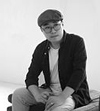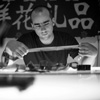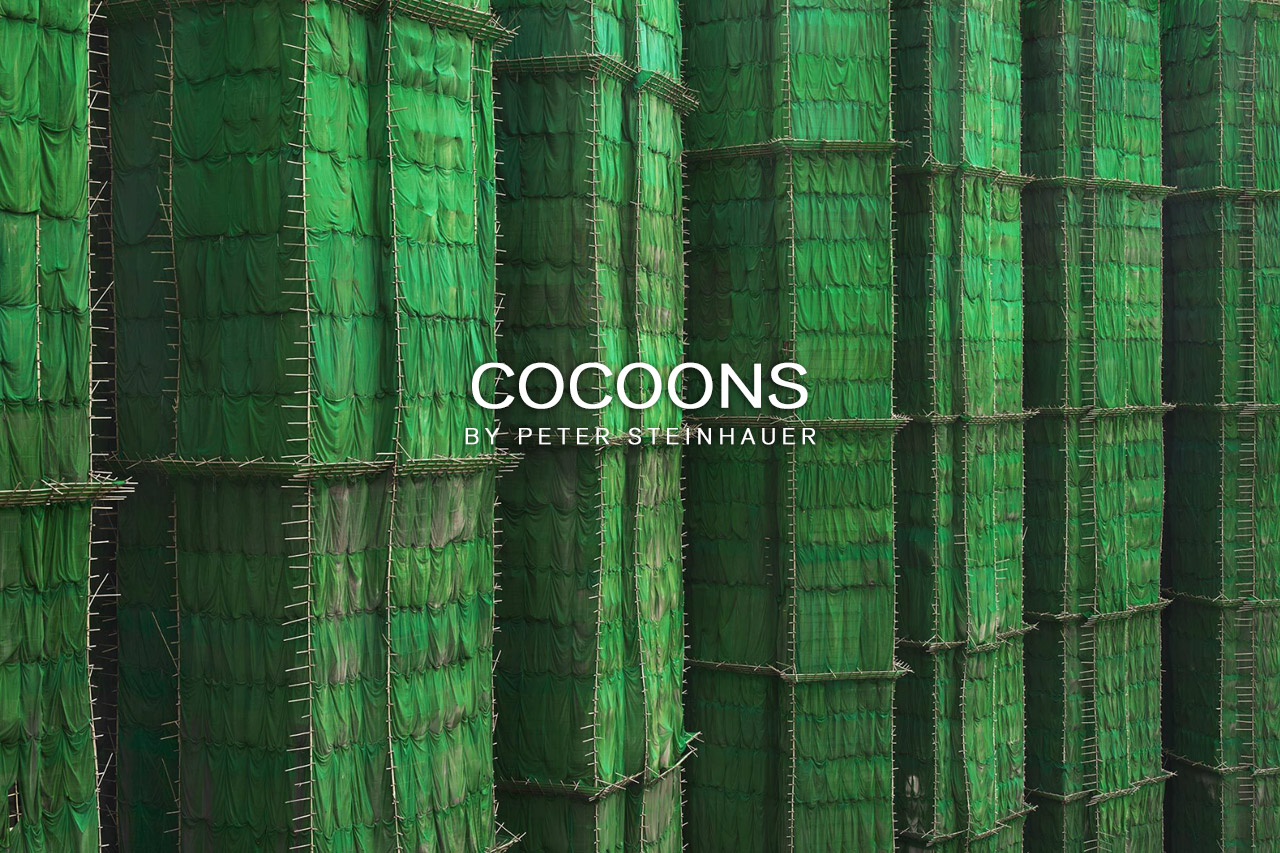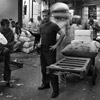Yang Yongliang





Artificial Wonderland is a series started in 2010. Yang Yongliang uses images of architecture as brushstrokes; heavy mountain rocks with enriched details draw a faithful reference to Song Dynasty landscape painting. Urban development makes life in the city flourish, but it also imprisons these lives; centuries-old cultural tradition in China is profound, but it has also remained stagnant. Ancient Chinese people painted landscapes to praise the greatness of nature; Yang's works, on the other hand, lead towards a critical re-thinking of contemporary reality.

















In Artificial Wonderland II (2014), there are digital replicas of two Song Dynasty master paintings, namely Travelers Among Mountains and Steams (Fan Kuan) and Wintery Forest in the Snow (anonymous). Whereas ancient landscapes are often seen as being without time, Yang's interpretation of the latter work is a nocturnal image, titled Wintery Forest in the Night. The 2014 series marks a step forward in terms of digital technique--the piece is larger than ever and enriched with tremendous detail images. Also, Yang conjucted natural mountain rocks into the signature artificial landscape for the first time. Images of the mountain rocks are mostly taken in Iceland and Norway. In 2015, Artificial Wonderland II was shortlisted in the Prix Pictet – the global award in photography and sustainability.
The Day of Perpetual Night and The Night of Perpetual Day, are two pieces that exemplify a line of recent video work by Yang Yongliang. In them, the traditional landscape extends a narrative between a subtle temporality and diffuse timelessness. With the same rigorous technique that characterizes his still images, in these videos he uses time as a tool to emphasize the paradox of our time: the crossroads between necessary nostalgia, our daily chaos and imagination.

The Night of Perpetual Day. Artwork preview here

The Day of Perpetual Night. Artwork preview here
 Yang Yongliang (Shanghai, 1980). He graduated from China Academy of Art in 2003, majored in visual communication. He started his experiments with contemporary art in 2005, and his practice involved varied media including photography, painting, video and installation. Yang exploits a connection between traditional art and the contemporary, implementing ancient oriental aesthetics and literati beliefs with modern language and digital techniques. His work as an expanding meta-narrative that draws from history, myth and social culture, and plays out in the context of the city and its ever-changing landscapes.
Yang Yongliang (Shanghai, 1980). He graduated from China Academy of Art in 2003, majored in visual communication. He started his experiments with contemporary art in 2005, and his practice involved varied media including photography, painting, video and installation. Yang exploits a connection between traditional art and the contemporary, implementing ancient oriental aesthetics and literati beliefs with modern language and digital techniques. His work as an expanding meta-narrative that draws from history, myth and social culture, and plays out in the context of the city and its ever-changing landscapes.




Artificial Wonderland is a series started in 2010. Yang Yongliang uses images of architecture as brushstrokes; heavy mountain rocks with enriched details draw a faithful reference to Song Dynasty landscape painting. Urban development makes life in the city flourish, but it also imprisons these lives; centuries-old cultural tradition in China is profound, but it has also remained stagnant. Ancient Chinese people painted landscapes to praise the greatness of nature; Yang's works, on the other hand, lead towards a critical re-thinking of contemporary reality.

















In Artificial Wonderland II (2014), there are digital replicas of two Song Dynasty master paintings, namely Travelers Among Mountains and Steams (Fan Kuan) and Wintery Forest in the Snow (anonymous). Whereas ancient landscapes are often seen as being without time, Yang's interpretation of the latter work is a nocturnal image, titled Wintery Forest in the Night. The 2014 series marks a step forward in terms of digital technique--the piece is larger than ever and enriched with tremendous detail images. Also, Yang conjucted natural mountain rocks into the signature artificial landscape for the first time. Images of the mountain rocks are mostly taken in Iceland and Norway. In 2015, Artificial Wonderland II was shortlisted in the Prix Pictet – the global award in photography and sustainability.
The Day of Perpetual Night and The Night of Perpetual Day, are two pieces that exemplify a line of recent video work by Yang Yongliang. In them, the traditional landscape extends a narrative between a subtle temporality and diffuse timelessness. With the same rigorous technique that characterizes his still images, in these videos he uses time as a tool to emphasize the paradox of our time: the crossroads between necessary nostalgia, our daily chaos and imagination.

The Night of Perpetual Day. Artwork preview here

The Day of Perpetual Night. Artwork preview here
 Yang Yongliang (Shanghai, 1980). He graduated from China Academy of Art in 2003, majored in visual communication. He started his experiments with contemporary art in 2005, and his practice involved varied media including photography, painting, video and installation. Yang exploits a connection between traditional art and the contemporary, implementing ancient oriental aesthetics and literati beliefs with modern language and digital techniques. His work as an expanding meta-narrative that draws from history, myth and social culture, and plays out in the context of the city and its ever-changing landscapes.
Yang Yongliang (Shanghai, 1980). He graduated from China Academy of Art in 2003, majored in visual communication. He started his experiments with contemporary art in 2005, and his practice involved varied media including photography, painting, video and installation. Yang exploits a connection between traditional art and the contemporary, implementing ancient oriental aesthetics and literati beliefs with modern language and digital techniques. His work as an expanding meta-narrative that draws from history, myth and social culture, and plays out in the context of the city and its ever-changing landscapes.Lei Lei + Thomas Sauvin
Beijing Silvermine is a project by french photographer Thomas Sauvin to recover the photographic records of the people of Beijing after the Cultural Revolution, from 1985 when photography (mainly 35 mm) became popular in China, until about 2005, when it began to give way to digital photography.
For several years, Sauvin collected negatives (many of them never printed), recovered from a recycling plant on the outskirts of Beijing. After an exhaustive selection and digitization, he has created a fascinating archive with over half a million 35 mm negatives that has become an intriguing record of the public and private lives of the inhabitants of that city. Over the past 20 years, China has experienced unprecedented economic liberalization, which has completely redefined the way people in its cities thrive, travel, eat and enjoy themselves.
This collection of material from anonymous sources has served as the input for editing a collection of photo books and exhibitions, in which Sauvin provides an authorial contribution to the reinterpretation of a form of appropriation, which has even been the starting point for collaborative pieces such as the animation by chinese visual artist Lei Lei, who selected 3,000 of these images to create an audiovisual piece entitled precisely Recycled in 2013. Director Emiliad Guillermine produced a short documentary that bears witness to Sauvin’s experience and his meticulous collection, sorting, editing and digitization of the thousands of images he recovered.
Thus, Sauvin’s work brings us closer to part of the collective memory of current Chinese society, enabling us to understand how it has changed its cultural dynamics in recent years, while providing a new perspective on the experience of the visual appropriation and recycling at a time when the mass production and consumption of images leads us to understand the importance, but above all the enormous authorial possibilities of the editor and curator to generate new discourses.
 Thomas Sauvin (Francia) A photography collector and editor who lives in Beijing. Since 2006 he exclusively works as a consultant for the UK-based Archive of Modern Conflict, an independent archive and publisher, for whom he collects Chinese works, from contemporary photography to period publications to anonymous photography. Sauvin has had exhibitions of his work, and published through Archive of Modern Conflict.
Thomas Sauvin (Francia) A photography collector and editor who lives in Beijing. Since 2006 he exclusively works as a consultant for the UK-based Archive of Modern Conflict, an independent archive and publisher, for whom he collects Chinese works, from contemporary photography to period publications to anonymous photography. Sauvin has had exhibitions of his work, and published through Archive of Modern Conflict. Lei Lei (China) An up-and-coming multimedia Chinese animation artist with his hands on graphic design, illustration, short cartoon, graffiti and music also. In 2009 he got a master's degree from Tsinghua University. In 2010, his film This is LOVE was shown at Ottawa International Animation Festival and awarded The 2010 Best Narrative Short. In 2013 his film Recycled was selected by Annecy festival and was the Winner Grand Prix shorts - non-narrative at Holland International Animation Film Festival. In 2014 he is the Jury of Zagreb / Holland International Animation Film Festival. and he was the winner of 2014 asian cultural council grant.
Lei Lei (China) An up-and-coming multimedia Chinese animation artist with his hands on graphic design, illustration, short cartoon, graffiti and music also. In 2009 he got a master's degree from Tsinghua University. In 2010, his film This is LOVE was shown at Ottawa International Animation Festival and awarded The 2010 Best Narrative Short. In 2013 his film Recycled was selected by Annecy festival and was the Winner Grand Prix shorts - non-narrative at Holland International Animation Film Festival. In 2014 he is the Jury of Zagreb / Holland International Animation Film Festival. and he was the winner of 2014 asian cultural council grant.Beijing Silvermine is a project by french photographer Thomas Sauvin to recover the photographic records of the people of Beijing after the Cultural Revolution, from 1985 when photography (mainly 35 mm) became popular in China, until about 2005, when it began to give way to digital photography.
For several years, Sauvin collected negatives (many of them never printed), recovered from a recycling plant on the outskirts of Beijing. After an exhaustive selection and digitization, he has created a fascinating archive with over half a million 35 mm negatives that has become an intriguing record of the public and private lives of the inhabitants of that city. Over the past 20 years, China has experienced unprecedented economic liberalization, which has completely redefined the way people in its cities thrive, travel, eat and enjoy themselves.
This collection of material from anonymous sources has served as the input for editing a collection of photo books and exhibitions, in which Sauvin provides an authorial contribution to the reinterpretation of a form of appropriation, which has even been the starting point for collaborative pieces such as the animation by chinese visual artist Lei Lei, who selected 3,000 of these images to create an audiovisual piece entitled precisely Recycled in 2013. Director Emiliad Guillermine produced a short documentary that bears witness to Sauvin’s experience and his meticulous collection, sorting, editing and digitization of the thousands of images he recovered.
Thus, Sauvin’s work brings us closer to part of the collective memory of current Chinese society, enabling us to understand how it has changed its cultural dynamics in recent years, while providing a new perspective on the experience of the visual appropriation and recycling at a time when the mass production and consumption of images leads us to understand the importance, but above all the enormous authorial possibilities of the editor and curator to generate new discourses.
 Thomas Sauvin (Francia) A photography collector and editor who lives in Beijing. Since 2006 he exclusively works as a consultant for the UK-based Archive of Modern Conflict, an independent archive and publisher, for whom he collects Chinese works, from contemporary photography to period publications to anonymous photography. Sauvin has had exhibitions of his work, and published through Archive of Modern Conflict.
Thomas Sauvin (Francia) A photography collector and editor who lives in Beijing. Since 2006 he exclusively works as a consultant for the UK-based Archive of Modern Conflict, an independent archive and publisher, for whom he collects Chinese works, from contemporary photography to period publications to anonymous photography. Sauvin has had exhibitions of his work, and published through Archive of Modern Conflict. Lei Lei (China) An up-and-coming multimedia Chinese animation artist with his hands on graphic design, illustration, short cartoon, graffiti and music also. In 2009 he got a master's degree from Tsinghua University. In 2010, his film This is LOVE was shown at Ottawa International Animation Festival and awarded The 2010 Best Narrative Short. In 2013 his film Recycled was selected by Annecy festival and was the Winner Grand Prix shorts - non-narrative at Holland International Animation Film Festival. In 2014 he is the Jury of Zagreb / Holland International Animation Film Festival. and he was the winner of 2014 asian cultural council grant.
Lei Lei (China) An up-and-coming multimedia Chinese animation artist with his hands on graphic design, illustration, short cartoon, graffiti and music also. In 2009 he got a master's degree from Tsinghua University. In 2010, his film This is LOVE was shown at Ottawa International Animation Festival and awarded The 2010 Best Narrative Short. In 2013 his film Recycled was selected by Annecy festival and was the Winner Grand Prix shorts - non-narrative at Holland International Animation Film Festival. In 2014 he is the Jury of Zagreb / Holland International Animation Film Festival. and he was the winner of 2014 asian cultural council grant.Peter Steinhauer

Since 1993, Peter Steinhauer has been documenting the many facets of Asian culture.
Upon his first visit to Hong Kong in January of 1994, arriving at the old Kai Tak International Airport, Steinhauer noticed a very large structure that was caged in bamboo and swathed in yellow material. He was amazed by this monumental structure, standing out beneath a canopy of clouds as it glowed against the monochromatic, urban skyline. Thus began Steinhauers fascination with these multicolored structures.
Once a practice throughout Asia, Hong Kong is the final stronghold of the bamboo scaffolders. The title Cocoon for this body of work was a natural choice. The framework; a metamorphosis; like caterpillars to butterflies. Colored material unveiled ceremoniously reveals a brand new façade, as in a cocoon revealing itself for the first time.



















 Peter Steinhauer (United States, 1966). Artist photographer who has been living and working un Asia since 1993. His photography focuses on architecture within urban landscape, natural landscape, Asian faces and man made structure. He is a recipient of numerous international photography awards including a finalist for the 2014 Lucie Awards, Ford Foundation grant for his multi year work in Viernam, Black and White Spider Award for Architecture, IPA and PX3 Paris awards, among others. He is also a member of the elite Explorers Club in New York.
Peter Steinhauer (United States, 1966). Artist photographer who has been living and working un Asia since 1993. His photography focuses on architecture within urban landscape, natural landscape, Asian faces and man made structure. He is a recipient of numerous international photography awards including a finalist for the 2014 Lucie Awards, Ford Foundation grant for his multi year work in Viernam, Black and White Spider Award for Architecture, IPA and PX3 Paris awards, among others. He is also a member of the elite Explorers Club in New York.
Since 1993, Peter Steinhauer has been documenting the many facets of Asian culture.
Upon his first visit to Hong Kong in January of 1994, arriving at the old Kai Tak International Airport, Steinhauer noticed a very large structure that was caged in bamboo and swathed in yellow material. He was amazed by this monumental structure, standing out beneath a canopy of clouds as it glowed against the monochromatic, urban skyline. Thus began Steinhauers fascination with these multicolored structures.
Once a practice throughout Asia, Hong Kong is the final stronghold of the bamboo scaffolders. The title Cocoon for this body of work was a natural choice. The framework; a metamorphosis; like caterpillars to butterflies. Colored material unveiled ceremoniously reveals a brand new façade, as in a cocoon revealing itself for the first time.



















 Peter Steinhauer (United States, 1966). Artist photographer who has been living and working un Asia since 1993. His photography focuses on architecture within urban landscape, natural landscape, Asian faces and man made structure. He is a recipient of numerous international photography awards including a finalist for the 2014 Lucie Awards, Ford Foundation grant for his multi year work in Viernam, Black and White Spider Award for Architecture, IPA and PX3 Paris awards, among others. He is also a member of the elite Explorers Club in New York.
Peter Steinhauer (United States, 1966). Artist photographer who has been living and working un Asia since 1993. His photography focuses on architecture within urban landscape, natural landscape, Asian faces and man made structure. He is a recipient of numerous international photography awards including a finalist for the 2014 Lucie Awards, Ford Foundation grant for his multi year work in Viernam, Black and White Spider Award for Architecture, IPA and PX3 Paris awards, among others. He is also a member of the elite Explorers Club in New York.



